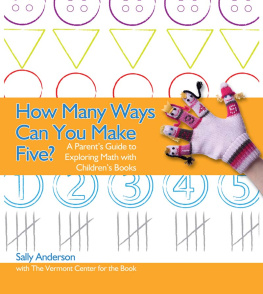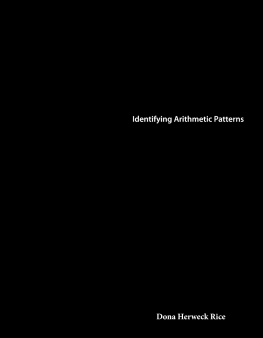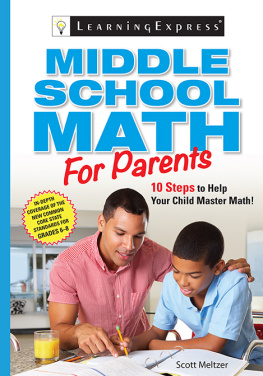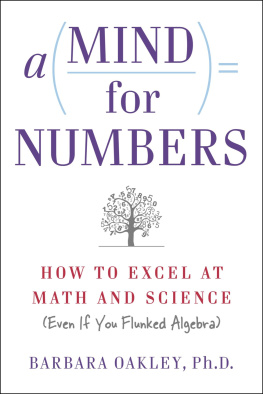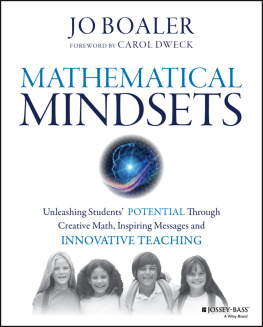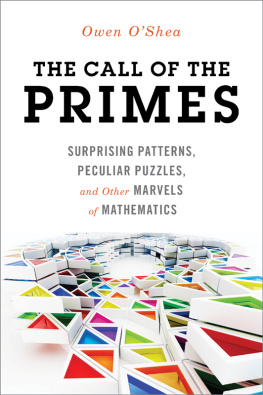Contents
Landmarks
Page List
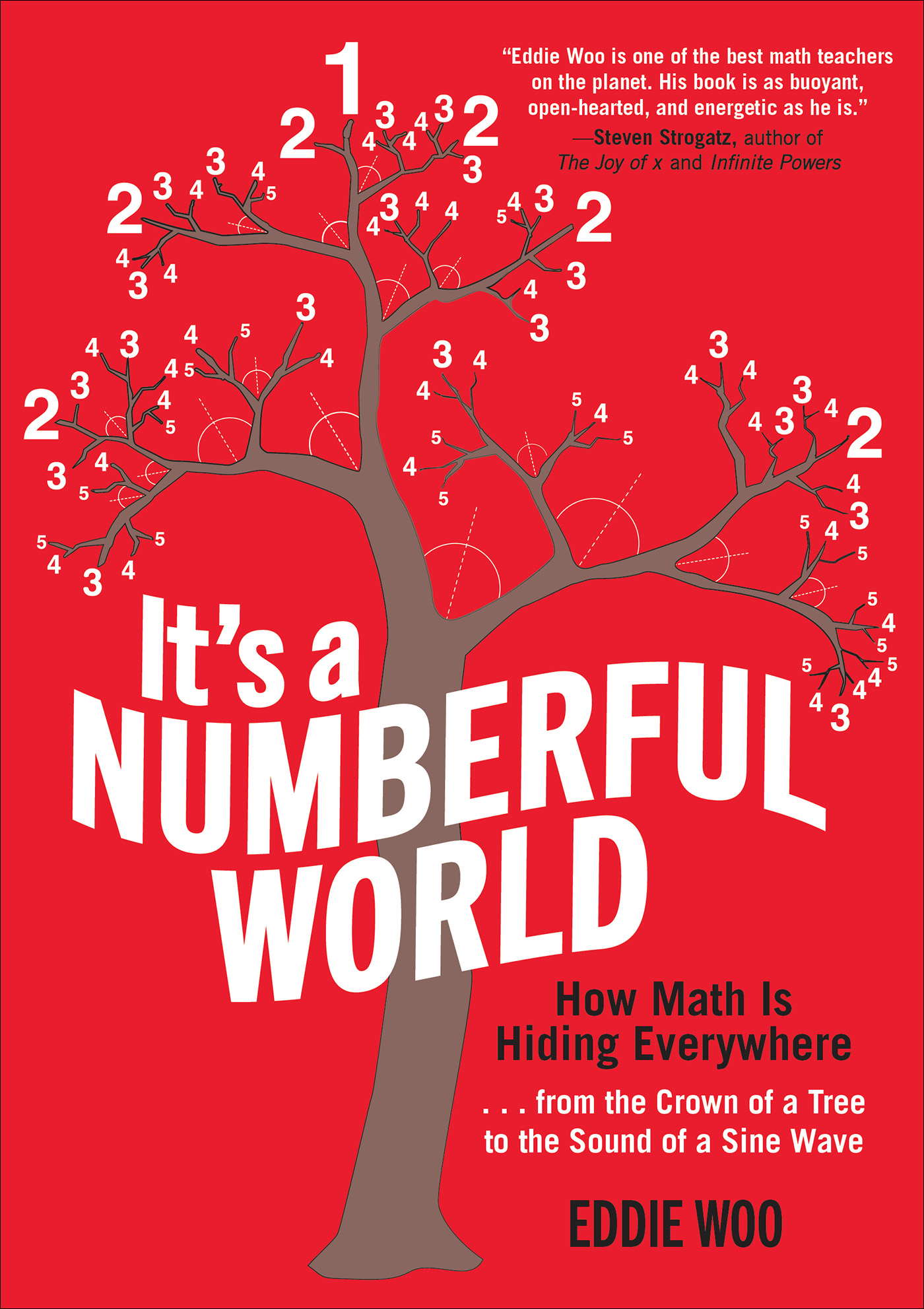

Dedicated to the Author of Life
Mathematics is the language with
which God has written the universe.
Galileo Galilei
Mathematics is the most beautiful and most powerful creation of the human spirit.
Stefan Banach
Prologue
When I was a school student, I found little joy in mathematics. I understood parts of it, but always found it discouraging: Doing math felt like trying to memorize an arbitrary set of rules in a game I didnt understand and didnt even really have any interest in winning. Despite being able to wrap my head around quite a few of the ideas and theorems, I seldom experienced success because I kept making what my teachers always called silly mistakescareless errors and flaws in the accuracy of my calculations that prevented me from getting the right answer.
As a teenager, that seemed to be what math was all about to me: learning ways to take a problem and find some elusive number trapped within it, the solution. Since I never found it very easy to do that, I tolerated mathematics but never enjoyed it or felt like I was any good at it. Instead, I focused on subjects that came to me much more naturally: English, history, and drama. But all that began to change the year I turned 19.
I sincerely hope that many of you opening this book share a story like mine. Mathematics was never your thing. I hope this becauseif youre holding this book and are about to dive into its pagesthen like me at age 19, your story isnt over yet. Because you see, when I was 19 years old I began training to become a mathematics teacher. That may sound a little surprising to you given the way I described myself earlierand I promise Ill explain how I ended up in this unusual position! But what matters for now is this: As I started out on the road to becoming a high school teacher, I learned a secret. Actually, I learned hundreds of thembecause I began to discover that mathematics was something very different from what I had thought it was. I started to uncover what Polish mathematician Stefan Banach was talking about when he said that mathematics is the most beautiful and most powerful creation of the human spirit.
Thats what this book is about. I want to take you with me on the journey I went on to understand that
math
is all
around
us.
Math enables us to see and touch the invisible realities that make our universe what it is, and math can help us more deeply appreciate all the things we love in this world. Those are some pretty big goalsso wed best get to it!
Happy reading.

all around us math is all around us math is all around us math is
CHAPTER 1
BORN MATHEMATICIANS

ARE HUMANS BORN MATHEMATICIANS?
This question was posed to me once during a radio interview. It came in the context of the assertion that humans are born scientists. You dont need to teach a child to experiment with their surroundings, observe the effects, and then repeat the process until they can confirm or deny a hypothesis. This behavior is instinctive and requires no formal training. In this way, even if they cant articulate it, children are thinking and working scientifically from the moment they first open their eyes and start to investigate the world around them.
So, are people born mathematicians? Do children think and work mathematically on their own or is this a learned behavior?
One of the reasons this question is on my mind is because it links closely to an idea that many people hold, which is that some people are born with mathematical ability while others are not. It usually comes in the form of the personal admission:
Im not a math person.
Its fairly common for people to think of mathematics as a special talent that only some people possess. If you arent born with it, you can never really get it. Many people say this of themselves (and teach it to their children!)but does it have any basis in reality?
To settle on an answer to this, we really need to work out first what we mean by a mathematician. This turns out to be harder to define than you might initially think. A biologist is someone who studies living things. A physicist studies moving things. A chemist studies substances. An astronomer studies stars and planets. A geologist studies rocks. These are all very well-defined fields with nice, neat boundaries. But what about a mathematician? What do they study? A knee-jerk response might be to say that a mathematician studies numbers, but there are entire fields of mathematics that can be explored quite deeply without discussing numbers (such as geometry or topology). So what is it that all mathematicians have in common?
The answer most people will agree on is that all mathematicians study patterns. A pair of odd numbers always add up to an even number. The exterior angles of any polygon, no matter how big or small or irregular, always add up to a full revolution of 360 degrees. The rows of Pascals Triangle always add up to a power of 2.

What do all
mathematicians
have in
common?

The path of an object under the force of gravity always traces out a curved shape called a conic section (either a circle, ellipse, parabola, or hyperbola). The florets of a flower always spiral outward according to a very specific (and ingenious) geometric pattern.
This is why its impossible to put a fence around what mathematicians are interested in: They are interested in any kind of pattern, and patterns exist everywhere.
We live in a patterned universe, a cosmos.
Thats what cosmos means (orderly and patterned)as opposed to chaos (disorderly and lacking sensible patterns).
Now we can actually define the question we started with. When we ask, Are humans born mathematicians? what we are really asking is: Are humans born to seek out and try to understand the patterns around us?
Stating the question in this way makes things clear. The answer is emphatically yes. The human brain is nothing if not a pattern-recognizing machine, built from the ground up to perceive patterns in our surroundings. You can describe virtually every function of the brain in terms of its relation to patterns. What is smell? Its our recognition of specific olfactory patterns and associating some of them with good (sweet) and some of them with bad (bitter). What is memory? Its the connection of patterns with specific meanings, like the facial and vocal cues of people we meet whom we can therefore later recognize.
Much of what we would describe as understanding or skill is the ability to recognize patterns more effectively than others. An experienced doctor can recognize a condition through a particular pattern of symptoms. An expert taxi driver knows the most efficient pattern of roads and turns to take to get to their destination given their current location and traffic conditions. And as we gain practice at performing certain patterns over time, they become a part of our character and personalitywe call them


